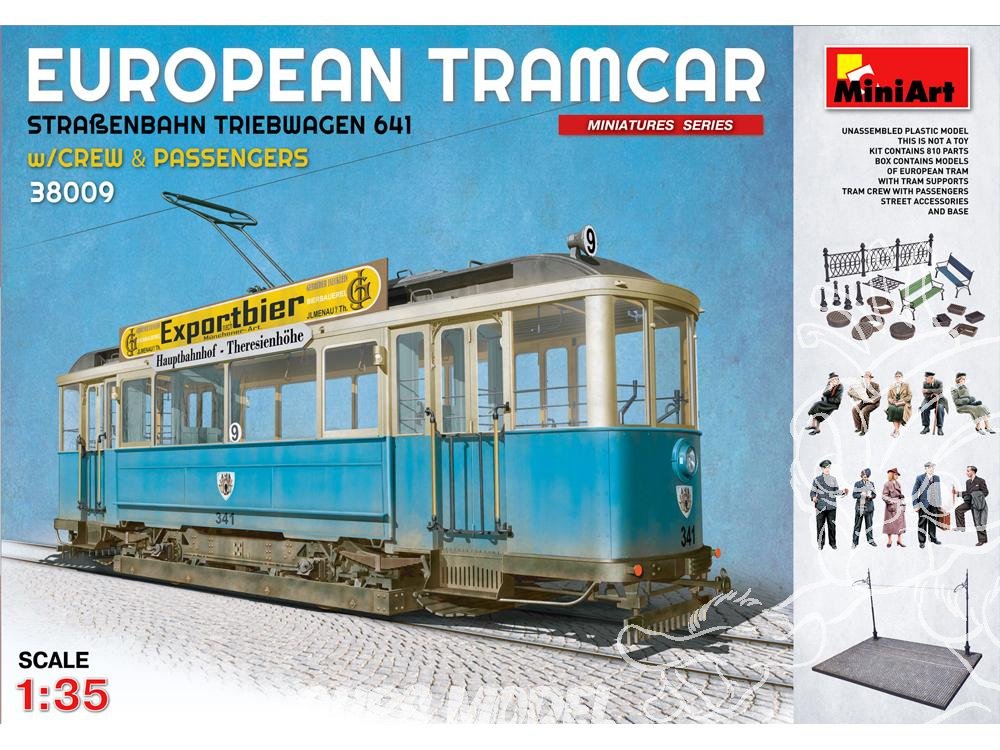-
Posts
2,979 -
Joined
-
Last visited
Content Type
Profiles
Forums
Events
Gallery
Everything posted by HubertB
-
Bienvenue sur LSM. Looking forward to see your works here. Hubert
-

Future Question (not one for later)
HubertB replied to belugawhaleman's topic in Modelling Discussion
There one I found (a loooong time ago) in France has a distinct perfume. Is it the same for the "original" Future-now-Pledge ? Hubert -

What is on your bench right now ? Share a picture :)
HubertB replied to Martinnfb's topic in Modelling Discussion
It’s actually an Amazon Prime show (at least in Europe) Martinn … Hubert -

What is on your bench right now ? Share a picture :)
HubertB replied to Martinnfb's topic in Modelling Discussion
The Expanse is definitely one of the best sci-fi shows I have seen. Hubert -
... plus an outdated vision of future combats, where tanks were there to support the infantry, which had helped France win WWI. Not many officers believed something else could be done with this new weapon. One of these officers with good acumen was named Charles de Gaulle ... Hubert PS: VERY nice rendering. You state well enough the reasons not to touch the tracks anymore than necessary, but some more weathering would enhance them and the tank a lot.
-

Our “Everything Ukraine” Group Build
HubertB replied to Clunkmeister's topic in Modelling Discussion
Back from vacation. Just a few last things to sort out, and I'll get started soon with a Miniart kit Hubert -

What is on your bench right now ? Share a picture :)
HubertB replied to Martinnfb's topic in Modelling Discussion
If it’s on internet, it must be true … 😂🤪🤣🤪 That goes to show the real value of the opinion of many of these « experts » … Hubert PS: your Kingfisher is awesome, Smitty 👍 ! -

Retirement may be closer than I thought......EVEN CLOSER NOW!!!
HubertB replied to ScottsGT's topic in General Discussion
Mine’s underway for July 1st. However, as long as I have not sold my company and thus gotten the cash to close some of my current commitments, I won’t completely be retired …. And thanks to the Covid-19- generated slump, the sale had to be postponed to 2024, to get some more positive perspectives and numbers … Hubert -
Petter dure had a unique propensity for original designs : the Lysander, the EE Lightning, the Folland Gnat … Very nice work Phil. This one looks better than venerable 1/32 Matchbox one, which I have in the stash (would you believe it 🙄 ?), but can’t find the resolve to properly deal with … Hubert
-
In general, I would agree with you, Cees. Going for a GB that is literally coincident with a "hot" conflict is most of the time calling for trouble and political statements that should be avoided on a modelling forum. But, a lot of GB here or elsewhere have a conflict for subject, whether the conflict is 100+ years old or was only a few decades before. Pretending to avoid a GB that is triggered by a conflict seems somewhat illogical in this light. The only difference is the "hot" vs "cold" in this instance ... But, above all, we have here a country that is being dragged into an all-out war by an agressive neigbour, on spurious arguments moreover. Not everything was perfect in Ukraine in the last 30 years, especially a latent corruption that does not fit with the values of their European counterparts, and some behaviours from Ukrainians in WWII deserve scrutiny (although one could argue they were more on a revenge against the exactions of Soviet Union that killed millions of them in the 30s). They were however on a track to improve, and one would be hard-pressed to argue they wanted this war. Siding with Ukraine is a no-brainer for the vast majority of the people of the world, and for Europeans, it is also about defending values we have tried to promote for 70 years. Which is why I - but that is just my humble opinion - they deserve all the support, physical or symbolical, we can bring them. Besides our actions as citizens, a GB that puts forward the Ukrainian products and armies in these times should be just taken for what it is : a symbolic show of support to a suffering people, doing what we know to do best ... Just my Hubert
-
I think I have found a subject that fits the bill: 1) it’s from an Ukrainian manufacturer 2) as I did not feel like going for a foreign (read non-Ukrainian) markings subject, and wanted to avoid the AMS lock that goes very often with building an aircraft, it had to be something else than an aircraft. 3) it’s a civilian subject, and that is in line with my own obsessions. So I found this, from Miniart. It looks like the historic trams you could see in most Central and Eastern Europe, and from some pics I looked at, like some old trams in Ukrainian cities. And, even if not prototypical, I will paint it blue and yellow. Hubert
-
I’d have said a squadron, at least, Ernie, plus a tank brigade😁 ! May I be nitpicking and encourage you to change the title of the GB and the banner announcing it to reflect the latest rule ? Right now, my stash is a rickety pile of filmed boxes on a palet in the garage, following the move. I’ll go past my fear that everything crumbles if I touch it, and see if I can select a box that fits the bill. However, between finishing settling in a new house, going on a planned vacation in the Carribeans, and starting and following the build of a new house, and my habitual procrastination and AMS tendency, I am still doubtful I can free enough time for it 😉. Still worth kicking my a#$ around, though, because there is no worthier cause right now than supporting the people of Ukraine against an loathsome agression. Hubert
-
Both are actually not incompatible. Most of us have a stash, and probably all the supplies needed to go through a big portion of the said stash. So no need to spend more on modelling to participate in the GB. Anyway, I salute your generous decision Hubert
-

Duchess of Kingston - Beauty of the Seas - Wooden Sailing Ship 1/64
HubertB replied to DocRob's topic in Non LSM 'WIP
Will follow this one with interest ! great choice of kit. Vanguard is the Tamiya ( at least the latest ones) of wooden ship kits. Great research, precise engineering, and accuracy. You should really have an enjoyable time. Hubert -
I just have plenty of ICM, Roden Micro Mir or Dora Wings kits in my stash, not to mention Reskit or Rexx AM. What I am missing most is the time for ANY build … Pondering this through. Hubert
-
So is it « All things Ukrainian GB », in which case the title and banner should be amended, or still « aircraft and armor from Ukraine » ? Hubert
-
I like the idea of « All things Ukrainian » better, even though, in fairness, I’d probably be unable to participate, considering my build record and foreseen activities in the coming weeks. Hubert
-
Previous comment removed by myself…Ernie’s comment below reminded me that I was clearly leaning on the wrong side of the rule, even if I meant to be more humorous than politic. Apologies to all. Hubert
-
Two Tunnans just landed on my bench, from Slovakia ... I had not realised they had such range . Not bad for a 50s vintage jet Hubert
-
There was a dog driving a car 😳 ? Hubert
-
Why Russia ? Why not just Mad Wlad and his corrupt friends, who distract Russian people by creating a propaganda war, whilst still plunging their greedy hands in the jam pot ? Hubert
-

Short Sunderland MkII
HubertB replied to ThomasProbert's topic in LSM 1/35 and Larger Work In Progress
AB-SO-LU-TE-LY LOVE IT ! Hubert -

1:32nd scale Sopwith 'Comic' conversion
HubertB replied to sandbagger's topic in LSM 1/35 and Larger Work In Progress
As usual, excellent work 🤙 ! Hubert -
Got a message this morning from Jiri, apologising for the cock-up and refunding the overpaid amount. All is good for the new Fly 1/32 Sabb J-29 Hubert
-

Two little Brewsters, now a Buddy Build.
HubertB replied to Clunkmeister's topic in LSM 1/35 and Larger Work In Progress
Your dog’s stomach ? Hubert





